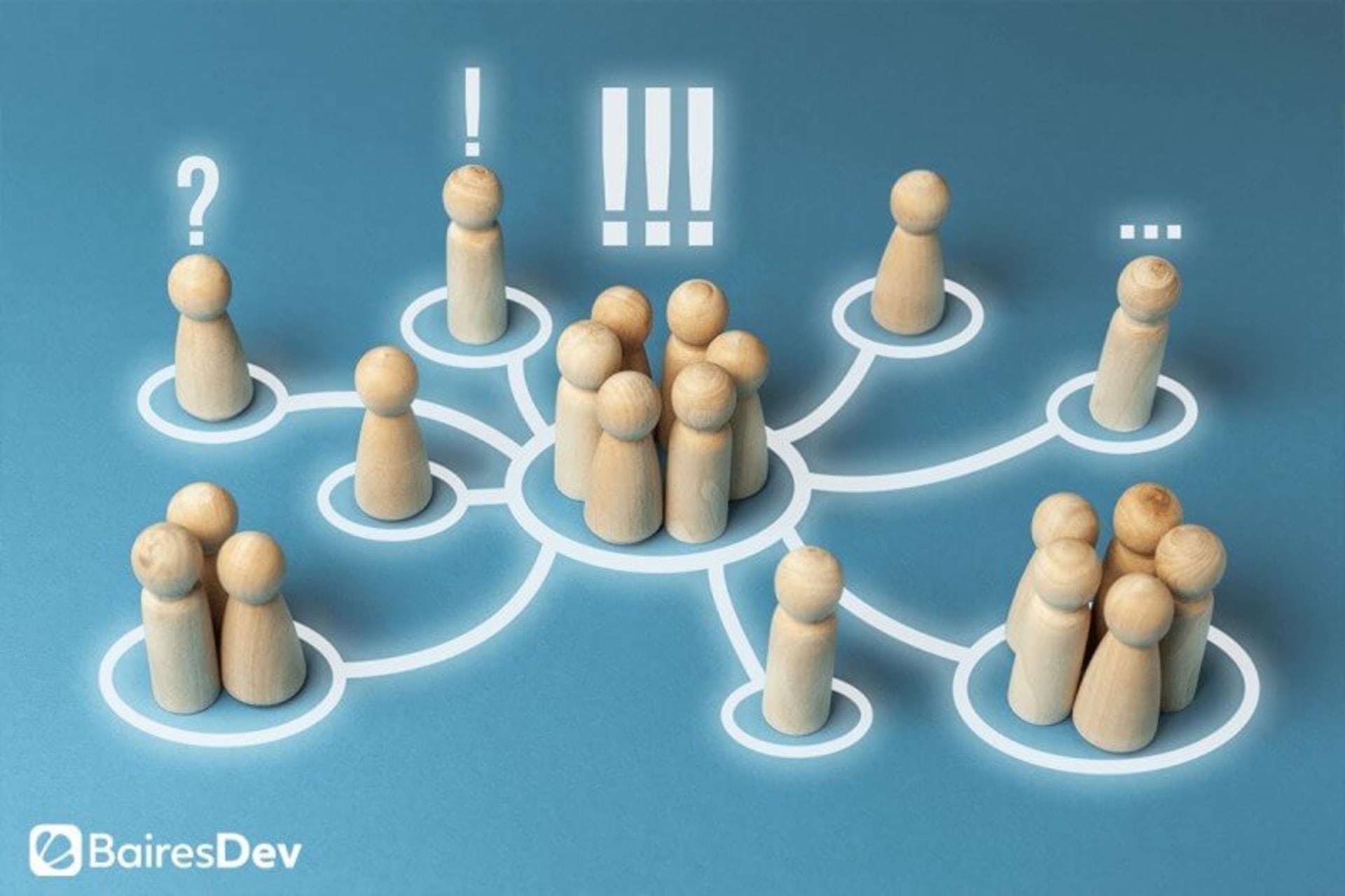Reaching the C-suite level is the dream of many professionals. It means you’ve climbed to the top of your industry and are the ultimate decision-maker in your area of expertise at your organization. Even today, when we’re seeing CEOs in their 20s leading startups, we still view these professionals as experts in their fields.
Because the C-level is more about making decisions and strategizing than actually getting your hands dirty and involving yourself in the nitty-gritty operations at your organization, the distinctions among the roles at the top are often somewhat blurry. This is certainly true of C-suite-level technology professionals.
The chief information officer (CIO), chief technology officer (CTO), and chief product officer (CPO) are three titles of technology leaders that are commonly found in a variety of organizations but are often confused with one another. So, what’s the difference? Does your company need all three?
| Criteria | CIO | CTO | CPO |
|---|---|---|---|
| Main Role | Overseeing IT strategy and operations, ensuring alignment with business goals | Leading technology development, research, and ensuring technology utilization | Guiding product strategy, overseeing product development, and launching products |
| Focus | Internal technology infrastructure and systems | Technology innovation, development, and efficiency | Product vision, user experience, and market positioning |
| Key Responsibilities | Managing IT staff, budgets, vendors, cybersecurity, and compliance | Developing new technologies, managing technical teams, overseeing tech R&D | Product lifecycle management, product marketing, and customer feedback |
| Strategic Input | Business alignment, digital transformation, risk management | Technology foresight, competitive advantage, innovation | Product-market fit, customer value, competitive positioning |
| Reports to | Typically the CEO | Often reports to the CEO or sometimes the CIO | Usually reports to the CEO |
| Core Skill Set | Business acumen, IT governance, project management | Deep technical expertise, innovation management, strategic thinking | Market analysis, product development, customer empathy |
| Team Management | Manages IT department | Oversees engineering and tech-related teams | Manages product teams including designers, developers, analysts |
| Typical Background | Information systems, business administration, sometimes engineering | Computer science, engineering, software development | Business, marketing, sometimes engineering or design |
| Business Impact | Improved operational efficiency, cost management | Enhanced product/service quality, competitive edge | Revenue growth, customer retention, market share |
| Decision-making | IT investment, digital policies, IT procurement | Tech stack choices, tech-related business strategy, R&D direction | Product roadmap, pricing, product launch decisions |
| Value Proposition | Enhances internal operations through technology | Drives innovation and competitive advantage through technology | Delivers customer value and business growth through product offerings |
| Collaboration | Closely works with all departments to align IT with business needs | Often works with product and engineering teams, business stakeholders | Collaborates with marketing, sales, customer success, and engineering teams |
| Challenges | IT budget constraints, rapid tech changes, cybersecurity threats | Keeping up with tech advancements, aligning tech strategy with business needs | Meeting customer expectations, product-market competition, managing stakeholders |
The Chief Information Officer
Often coming from an information technology (IT) background, the CIO is responsible for the internal technological infrastructure of a business and its operations. But like other executives, they don’t just oversee the IT department — they must also “sell” their ideas and strategies to other team leaders, stakeholders, and company decision-makers. In order to do this effectively, CIOs must have strong marketing, leadership, and communication skills, in addition to technical knowledge.
It’s important to emphasize that the CIO focuses on processes, tools, and technologies within the company, as opposed to external or consumer-facing products and operations. This is one way it differs from the roles we’ll describe in further detail below. But that doesn’t mean the CIO is solely concerned with day-to-day operations — they also look at the big picture of the organization and identify ways they can improve their infrastructure to achieve their goals.
Some of the areas the CIO oversees are:
- Cybersecurity
- Cloud computing
- Information risk management (IRM)
- Vendor relations and communication
- Big data analytics
- Software for internal use
- Networks
While the focus is on internal operations, the CIO still ties their objectives to the overall mission of the organization and makes decisions that affect the company’s bottom line, allowing them to deliver better products and services.
The Chief Technology Officer
A CTO, on the other hand, works with externally-facing products and services that incorporate technology. In other words, they focus on developing strategies to create new products or improve existing ones, those that customers buy and use.
CTOs often come from a software development background, since this position involves understanding how to build products for an audience. However, there are many paths to reaching this role. For example, former IT managers or directors will likely also have a solid knowledge of and preparation for the CTO role, too.
As the CIO, this executive is responsible for pitching their strategies and ideas to peers and stakeholders within the company. But they will also have a stronger role in looking at the market and sometimes communicating directly with clients in order to deliver products that consumers need and want.
The main goal of the CTO is to help the organization meet its objectives by coming up with ideas and directing the implementation of software and other products that are based on or heavily incorporate technology. These products should be instrumental in achieving the company’s bottom line. Depending on the size and nature of the business, they may also play a large role in actually developing these products.
The Chief Product Officer
Of the three roles mentioned here, the CPO is perhaps the least well understood. That could be because the executive position wears so many hats and encompasses a vast array of diverse skill sets, as well as the fact that it’s somewhat of a newer role than the other two.
As you probably gather from the name, the CPO owns the product — the main “thing” the business delivers and sells. But, you’re probably wondering, isn’t that the job of the CTO? Yes, but the CPO’s role is a bit different. While the CTO is the leader who looks at the “how” — how do we create a product that assists in achieving the company’s goals? — the CPO is focused on the “why” — why do we need this product?
The CPO examines the market to determine how to best address and achieve key business objectives. Based on their research, they devise ideas for a product vision that responds to market challenges and demands.
Because the role encompasses marketing and the strategy that is necessary for achieving a product vision, a technology background isn’t the only path that could lead you to the CPO role. Marketing, project management, and — perhaps most directly — product management can also serve as preparation for this leadership role.
How Do They Work Together?
Indeed, there is often a considerable amount of overlap in the roles of the CIO, CTO, and CPO. And in a smaller business or startup, you’re unlikely to encounter all three. But in large, well-established businesses — particularly those in which technology plays a critical role — you may well see two or more of the positions.
While they own different processes and functions, the CIO, CTO, and CPO work closely to ensure that their strategies, priorities, and visions align. For example, the CIO will collaborate with the CTO to devise a plan for implementing systems that help employees develop software conceptualized by the CTO. Meanwhile, the CTO and CPO might work in conjunction with one another to ensure that they’re innovating while addressing market demands.
Remember, too, that none of these roles oversees or is senior to the others. If an organization has more than one of these positions, they will serve as peers to one another. Moreover, they often involve similar skills, including:
- Technology
- Problem-solving
- Collaboration
- Business sense
- Leadership
- Prioritization
So, do you need all three roles at your organization? If not, which one should you choose? If you’re a small startup, it may not be necessary to have all three, and you might combine, say, a CIO and CTO into a single position. A larger company may well need more than one to keep it running smoothly. Ultimately, that depends on your goals and mission.







